"Brain-like" Knowledge Management
The human brain has 80 billion+ neurons, and each neuron has 200-300 synapses. Neurons are connected through synapses, forming a neuron network that can think intelligently.
The brain has two memory modes: short-term memory and long-term memory. Short-term memory allows people to recall events seconds or even minutes ago, while long-term memory allows people to recall information more distant.
Unfortunately, short-term memory is limited on capacity. Some studies
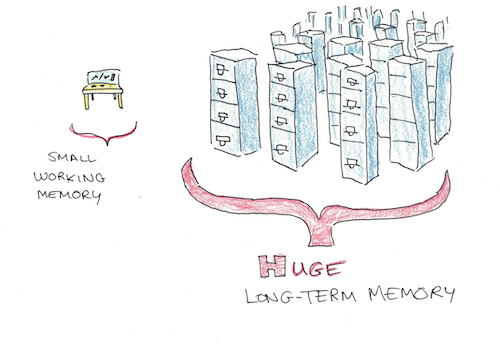
Long-term memory, on the other hand, is recorded in the synapses that connect neurons to each other. The shape of synaptic connections constitutes people's long-term memory. The information stored by a single synapse is very limited, only fragmented information can be stored; but through many interconnected synapses and synaptic clusters, large and complex information with clustering and pattern characteristics can be stored. When the synapses are constantly stimulated by a certain information, the corresponding connections will be strengthened, and then the long-term memory will be more durable; on the contrary, if a certain information is rarely stimulated to the synapses, the corresponding synaptic connections will shrink, and long-term memory will be forgotten.
Recent studies
Six Characteristics of "Brain-like" Knowledge Management
Minimize Information Module Storage
Unlike traditional knowledge management, which stores information in the separated files, "Brain-like" knowledge management should divide them into many small information modules. In other words, An article or a document should be composed of many information modules.
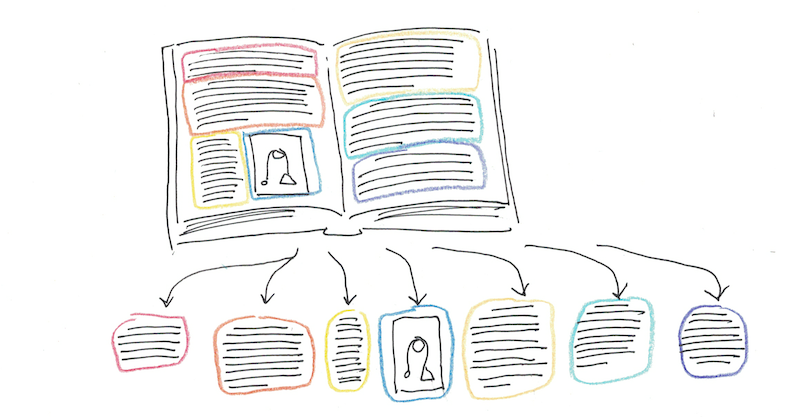 Image from: https://www.scotthyoung.com/blog/2019/04/24/working-memory/
Image from: https://www.scotthyoung.com/blog/2019/04/24/working-memory/Hierarchical Dynamic Relationship Network
Unlike traditional knowledge management, which manages content in a simple and fixed "Folder-File" way, "Brain-like" knowledge management should be able to use relational network to manage them. Multi-dimensional dynamic relationship can be established between contents. Hierarchical complex knowledge network can be built, from top to bottom or bottom to top.
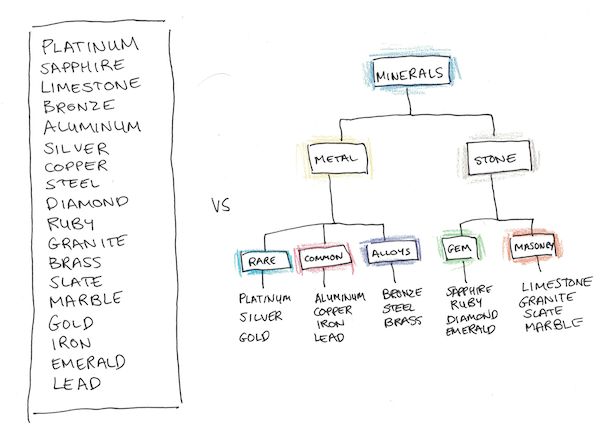 Image from: https://www.scotthyoung.com/blog/2019/04/24/working-memory/
Image from: https://www.scotthyoung.com/blog/2019/04/24/working-memory/Multidimensional Linear Narrative
The "Brain-like" knowledge management should be very convenient for linear narrative in main line, without like Wiki to jump among various entries and get lost in them. "Brain-like" knowledge management should connect information modules into different sequences very easily, and embed the multi-dimensional extension information in it.
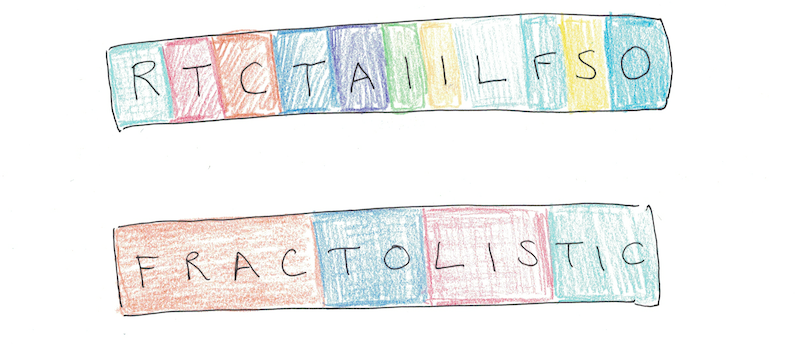 Image from: https://www.scotthyoung.com/blog/2019/04/24/working-memory/
Image from: https://www.scotthyoung.com/blog/2019/04/24/working-memory/Divergent Information Expansion
In traditional knowledge management, content is mostly isolated, either no connection between contents, or needs to be added and maintained manually, it's very boring. The "Brain-like" knowledge management should provide multi-scenario and multi-dimensional divergent expansion information based on the contents, help people to establish associations with other possible informations, to strengthen the long-term memory.
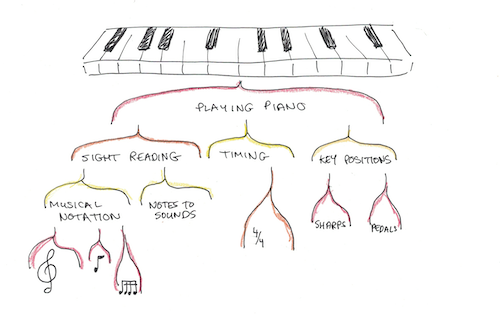 Image from: https://www.scotthyoung.com/blog/2019/04/24/working-memory/
Image from: https://www.scotthyoung.com/blog/2019/04/24/working-memory/Minimize Switching Working Contexts
Human working memory is very limited, with only 4 capacity units. To effectively improve work efficiency, you should stay focus as much as possible and avoid switching working contexts. Unfortunately, traditional knowledge management all almost violate this rule. People would need to leave current context to create new article to record inspirations; they would need to switch to another interfaces or apps to create outlines; they would need to go into another interface to search and look up contents; even they would need to switch back and forth among the numerous tab pages to find what they need... Obviously, these are ruthlessly flushing working memory and reducing brain's efficiency.
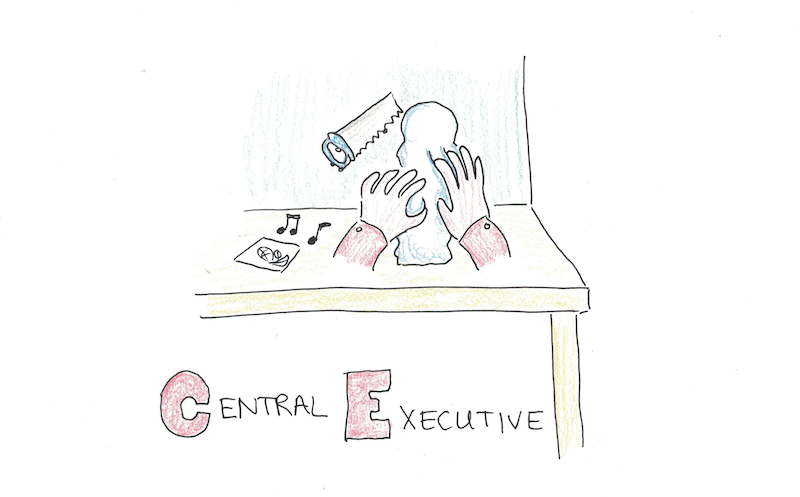 Image from: https://www.scotthyoung.com/blog/2019/04/24/working-memory/
Image from: https://www.scotthyoung.com/blog/2019/04/24/working-memory/Information Visualization
Visual information account for 85% of the human brain's input, and they lead to richer and more enlightening insights and associations. "Brain-like" knowledge management should provide effective and inspiring information visualization tools to help humans better understand and explore complex information patterns and knowledge networks.
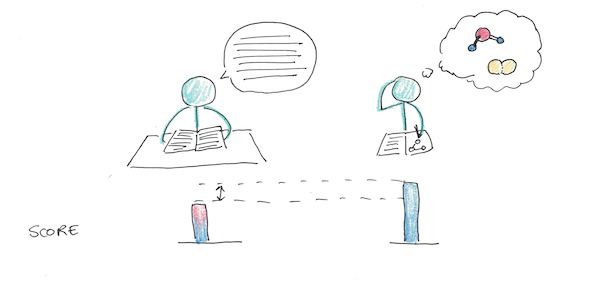 Image from: https://www.scotthyoung.com/blog/2019/04/24/working-memory/
Image from: https://www.scotthyoung.com/blog/2019/04/24/working-memory/
Memex - Bush's "Brain-like" Knowledge Management System
Back in 1945, Vannevar Bush, director of the U.S. Office of Scientific Research and Development, published a famous article, named As We May Think , which would have far-reaching consequences for later generations. In the article, he envisions a device for recording, storing, organizing and browsing personal knowledge bases: Memex.
Bush described Memex as a desk, in which people can easily store documents, photos, notes and other materials in microfilm through a set of electronic and mechanical devices,, and also can easily index and view these information. More specifically, people can also use a linear sequence to reorganize them to form an Associative Trail. It simulates the working mode of the human brain: store and index a large amount of information, and then pass through some clues to organize them.
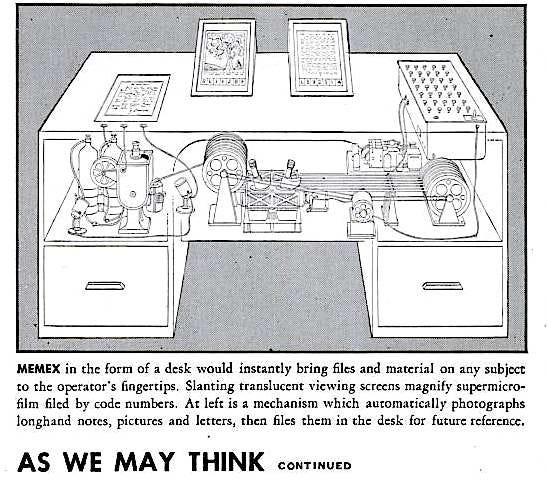
Bush believed that Memex should be a private document and library system, that gives people access to huge pieces of knowledge, allows people to create personalized threads of information and notes in it, and can be shared with others.
He had this statement in the text:
Our ineptitude at getting at the record is largely caused by the artificiality of systems of indexing. When data of any sort are placed in storage, they are filed alphabetically or numerically, and information is found (when it is) by tracing it down from subclass to subclass. It can only be found in one place, unless duplicates are used; one has to have rules as to which path will locate it,... The human mind does not work that way [i.e. linearly]. It operates by association. With one item in its grasp, it snaps instantly to the next that is suggested by the association of thoughts, in accordance with some intricate web of trails carried by the cells of the brain.
Apparently, Bush considered the "Brain-like" knowledge management is the ideal type. Memex he envisioned would later inspire Personal Computer, Graphical Interface, Internet, and World Wide Web, etc.
NLS - Engelbart's Augmented Human Intelligence System
In the 1960s, 15 years after Memex was made public, Douglas Engelbart, who was deeply influenced by Bush, proposed a human-machine collaboration system: NLS (oN-Line System). In this system, Engelbart proposed many technologies including Mouse, Hypertext Link, Multi-window Interface, etc., which constituted the prototype of human-machine interface of personal computer.
NLS was envisioned by Engelbart in his 1962 paper "Augmenting Human Intelligence: A Conceptual Framework" and later demonstrated at a computer-related conference in San Francisco in 1968. That had named by later as The Mother of All Demos.

NLS is actually just a specific implementation of Engelbart's Augment System Theory. He expected computers to improve the level of human intelligence. He introduced this idea entirely in Augmented Knowledge Workshop in 1986. Some of the wonderful excerpts are as follows:
There are many inventions, skills, methods, working conventions, organizational modes, etc. which have been integrated into the human's knowledge-work environment to "augment" his basic, inherited, biological capabilities. Let a working assemblage of all of these be called an Augmentation System.
I broke the many parts of the Augmentation System into two main sub-systems: one contained all of the hardware, software and other artifacts -- the Tool System; and all the rest of it I called the Human System. Note that the Human System contains our natural languages, and the conceptualizations and formalisms of every discipline: an overwhelming network of invention.
The emergent information technologies promised such startling innovation in the Tool System, most of the Human System elements that are involved in our knowledge work are likely to be up for improvement or replacement. And the Framework further predicted very large improvements in human knowledge-work capability as a result.
This kept me focused on documents -- which carry the knowledge, plans, arguments, etc. that are critical to helping us better climb the evolutionary hill. It also very directly pointed to the importance of developing improved support for collaboration among distributed workers.
I still don't see clear perceptions about what we humans can gain in new capabilities, or about how this may come about. There are constant, echoing statements about how fast and smart the computers are going to be, but not about how the enhanced computer capabilities will be harnessed into the daily thinking and working life of our creative knowledge workers.
Obviously, Engelbart is not just creating a human-computer interface, but a knowledge management system that enhances human intelligence. However, such a document system has not yet been fully implemented.
Lattics "Brain-like" Function Overview
Card-like Content Storage
Lattics provides a library of cards where messy, fragmented information can be stored. Cards can be dragged from the card library into the project outline to become articles; and they can also be cited in articles and become part of the body content.
The text content in the article, such as paragraphs, pictures, tables, code blocks, mathematics formulas, etc., can be dragged and moved in the way of "Block" to adjust the position in the article.
Hierarchical Content Relationship Network
In theory, in Lattics, an article can appear in an infinite number of projects, and a card can be cited in an infinite number of articles. The position of the article in the project outline is also completely free, it can be dragged and placed at any level and any position in the outline.
Lattics provides three hierarchies: Project - Article - Card by default, which can achieve almost all content creation scenarios with a very high degree of flexibility. You can use projects to distinguish reports, papers, reading notes, novels and other different writing projects; use articles to write and organize body text; use cards to record famous sayings, character descriptions, various inspiration and fragmentary information, etc... Using them effectively will greatly enhance knowledge creation.
Lattics provides @ syntax to cite cards in articles, which makes it easy to connect or reuse contents. By default, citations are displayed as title of cards, which can be regarded as local "hyperlinks"; citations can also be displayed as full-text of cards. That is more convenient than "copy-paste" method.
The content cited in the full text can be "modified in one place, updated in other places at same time". That is, if the cited card or article is modified in one place, other places cited will be automatically refreshed synchronously. This will bring great convenience to knowledge creation.
Sequence Reading
Card-like Content Storage and Hierarchical Content Relationship Network fit the brain's working modes well and bring many convenience benefits for knowledge management, but fragmented information can not be easily organized to linear narrative. To this end, Lattics provides Sequence Reading.
After starting "Sequence Reading" at the bottom of the project outline, Lattics will automatically concatenate all the articles into a long article following the order of the content in the outline, and that can be read throughout sequently.
In Sequence Reading mode, you can drag and drop article in the project outline to adjust its position, and Lattics will automatically update the order of contents. And you can also directly edit the content of articles in Sequence Reading mode, same like editing a single article.
Heuristic Content Extension
The human brain's memory mechanism were introduced in The Structure Of Human Brain, How It Works, And Its Limitations. People need heuristics and associations to expand and strengthen synaptic connections between neurons. To this end, Lattics provides the Heuristic Content Extension function. When you open it, you can see all the extended information related to the article, including: Tag, Backlinks, Document Structure, Related Cards or Articles, etc.
Workbench-like Interface
A craftsman usually has a workbench. All tools needed to make handicrafts are placed next to the workbench and are within easy reach. He only needs to focus on the crafts that are being created on the workbench, not necessary to looking for them in somewhere.

Lattics provides such a workbench-like interface for knowledge workers. It has no multi-windows, no multi-hierarchies interface, or even no tab pages. The tools and content required for knowledge creation are all tiled on the same layer of interface. On this interface, you can create projects, articles, and cards; on this interface, you can drag and drop various contents; on this interface, you can search for the any content and modify them at any time; on this interface, you can view and edit the entry information embedded in the text without jumping away; on this interface, you can open two articles for comparison at the same time.
Obviously, Workbench-like Interface can make the brain more focused, easier to enter the flow, and easier to convert short-term memory into long-term memory.
Offline First & Full-library Backup
A person's knowledge base is one of his most private dataset. Especially for knowledge creators, the scientific projects being researched, the novels being written, the research reports being drafted... these crystallization of knowledge are their survivals depend on. So the very high level security should be provided to protect knowledge base.
Lattics adopts the "Offline-First" approach, which is different from the popular "Online-First". That is, no need to register or log in, all content created with Lattics will be saved on your own computers or laptops and will not be uploaded to any networks or servers.
In order to ensure the security of data storage, Lattics provides full-library backup freely. You can manually or regularly back up all contents in Lattics. And the entire contents of the corresponding time can be restored from these backup files at a later date.